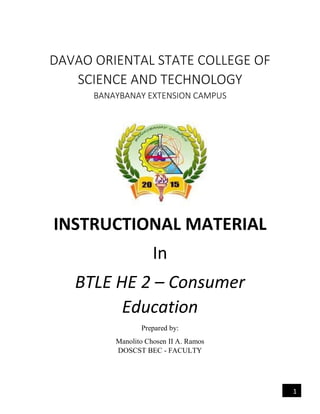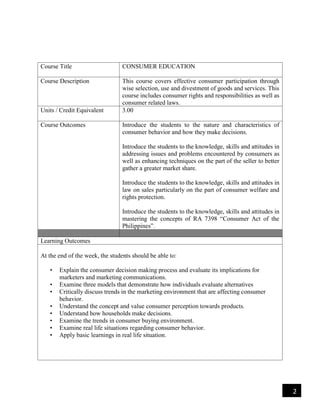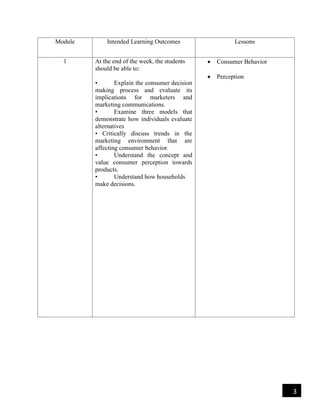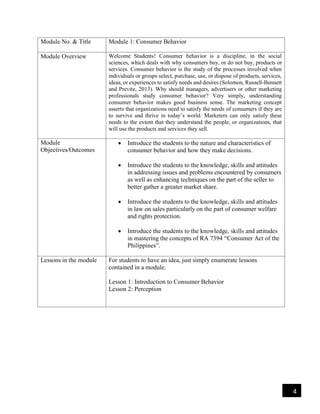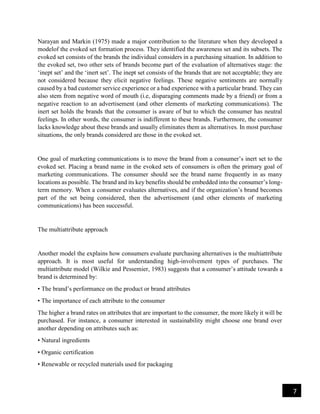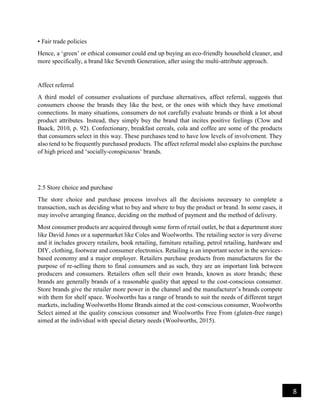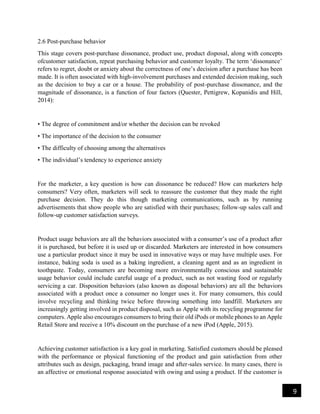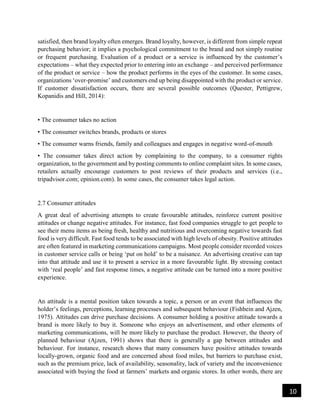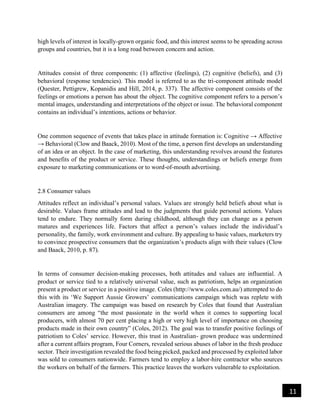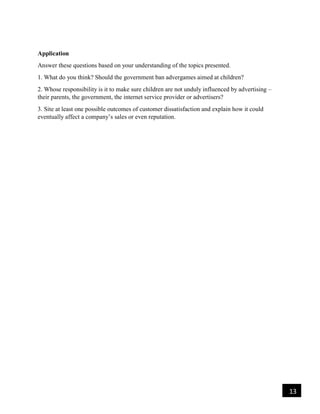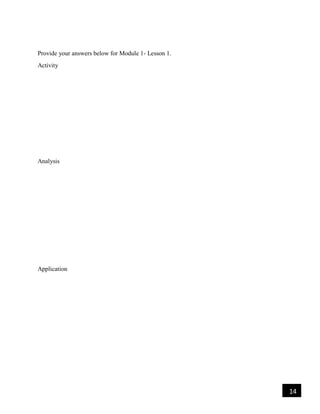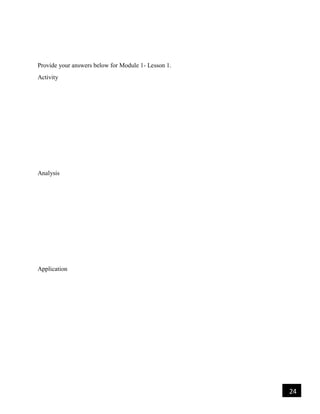1. The document provides an overview of a course on consumer education, including the course description, units, outcomes, and modules.
2. Module 1 focuses on consumer behavior and includes lessons on introduction to consumer behavior and perception.
3. The lesson on introduction to consumer behavior defines consumer behavior and discusses the consumer decision-making process and models used to evaluate alternatives.
